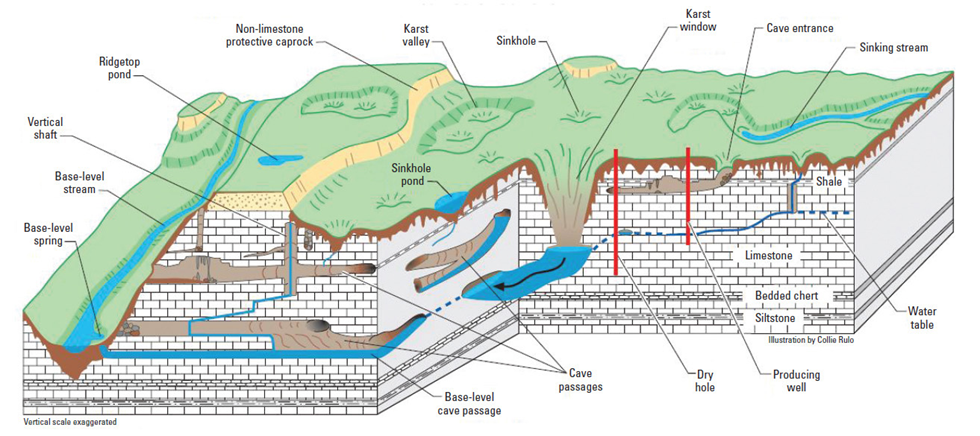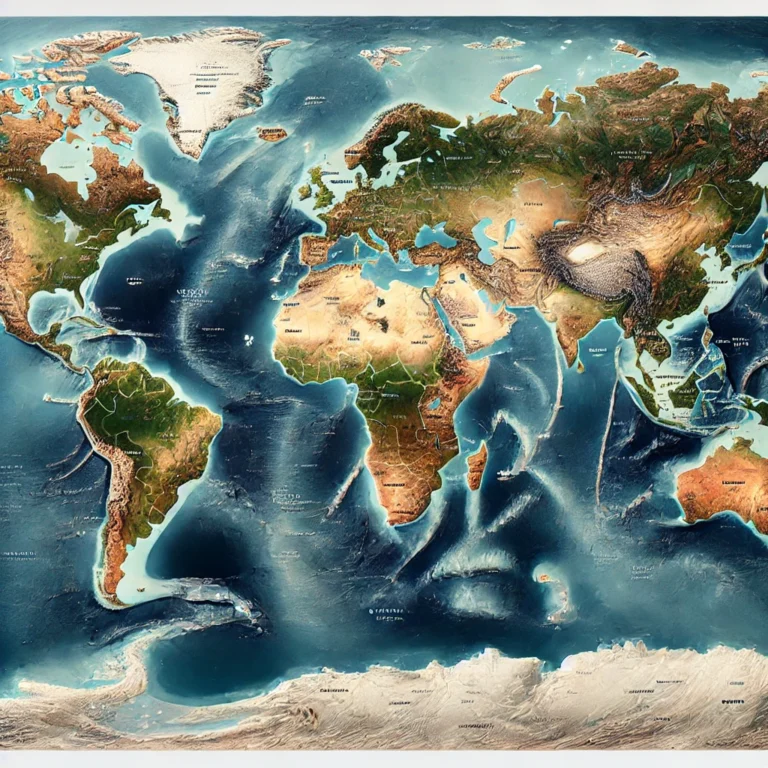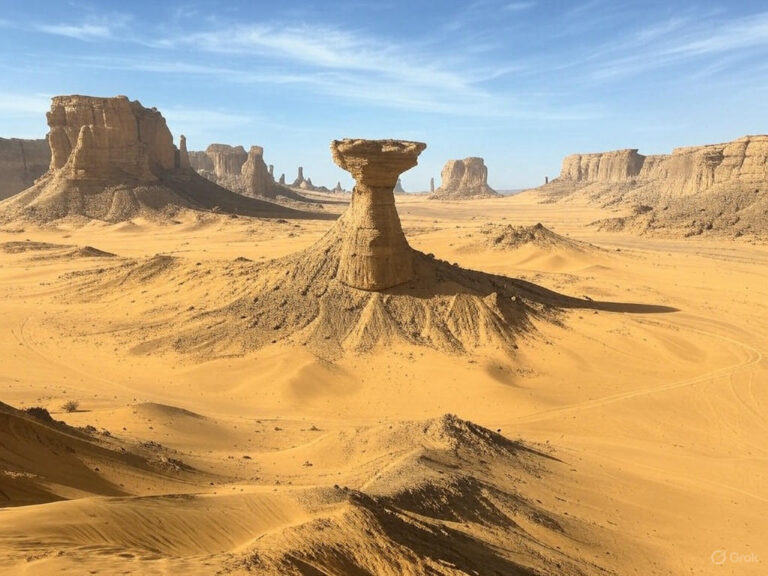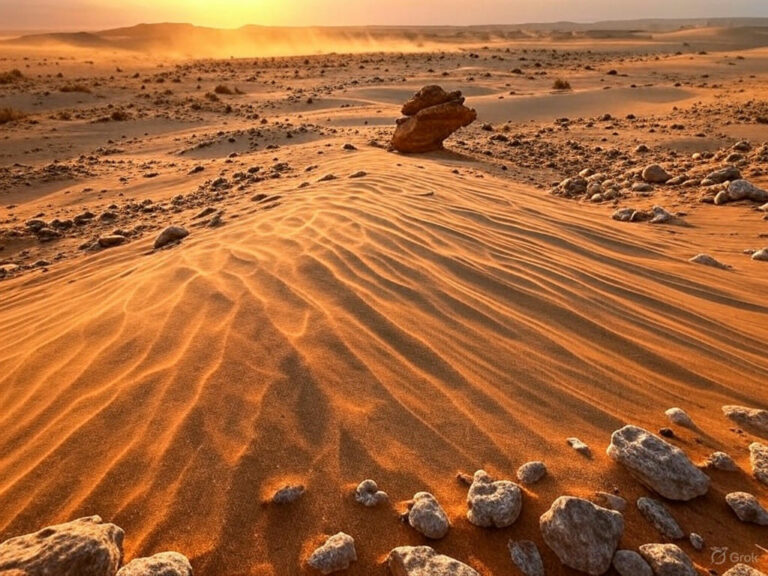Erosional Landforms in Karst Topography
Let’s understand erosional landforms in karst regions . Imagine you are an explorer walking across a vast limestone plateau, where the ground beneath your feet is not smooth but full of ridges, cracks, and holes. The landscape seems like nature’s own puzzle, sculpted over thousands of years by nothing but water.
Lapies
As you step forward, you notice the ground is not even. It’s rough, full of sharp ridges, deep grooves, and narrow channels. This is Lapies, a French term describing the highly corrugated surface of limestone regions. Think of it like an ancient stone pavement that has been weathered and worn away by time. These formations result from rainwater, charged with carbon dioxide, slowly dissolving the limestone, deepening cracks, and leaving behind a jagged terrain. So let’s define lapies as follows:
Lapies are irregular, grooved, and ridged limestone surfaces formed by chemical weathering due to the dissolution of limestone by rainwater containing carbon dioxide.

Solution Holes and Associated Features
Rainwater doesn’t just flow over the surface; it seeps into cracks, dissolving the limestone beneath. Over time, this creates solution holes, some small and others large enough to swallow entire streams. Let’s look at some of these fascinating formations:
- Sinkholes: Imagine walking across the land when suddenly you see a deep, funnel-shaped depression, ranging from 3 to 9 meters in depth. This is a sinkhole, created as cracks in the limestone expand due to continuous solvent action.

- Swallow Holes & Dolines: Some sinkholes become passageways for surface streams, making water disappear underground. As they enlarge, they form dolines, which are broader depressions.
- Solution Pans: Like dolines but shallower and wider.
- Uvalas & Poljes: If multiple dolines merge, they form uvalas, and when even larger ones coalesce, they create vast depressions called poljes.
- Karst Window: Sometimes, the roof of a sinkhole collapses, creating an opening that reveals underground rivers. These are called karst windows, giving geologists a peek into the hidden world below.


Valleys of the Karst Region
Moving ahead, you notice valleys that behave differently from normal river valleys.
- Sinking Creek: The land looks like a sieve with numerous sinkholes. Water flows into these, disappearing underground, forming a feature called a sinking creek.
- Blind Valley: You follow a stream that suddenly vanishes into a swallow hole, leaving a dry valley. This is called a blind valley—a river’s journey that seems to have reached a dead end.
- Karst Valley: Unlike typical river valleys, some limestone regions develop karst valleys, which appear like wide U-shaped valleys but often lack permanent surface water since streams disappear underground.
Now, let’s simply define them one by one:
- Sinking Creek is a stream that disappears into sinkholes, flowing underground instead of following a surface channel.
- Blind Valley is a valley where a stream abruptly vanishes into a swallow hole, leaving the remaining valley dry.
- Karst Valley is a wide, U-shaped valley in limestone regions, often lacking permanent surface water as streams sink underground.
Phreatic Zone vs. Vadose Zone
Underneath the ground, water is stored in different zones:
- Phreatic Zone(or Zone of Saturation): The region below the water table, where all pores and fractures are filled with water.
- Vadose Zone: The region above the water table, where water moves freely but does not fill all spaces.
Understanding these zones helps scientists explain how underground rivers and caves develop over time.

Caves and Caverns
Continuing your journey, you enter a cave—a large, hollow space beneath the surface. These are formed due to corrosion and abrasion by underground water. Scientists have different theories explaining their formation:
- Corrasion Theory: Suggests that moving water above the water table (Vadose zone) wears away limestone, forming caves.
- W.M. Davis (2-Cycle theory): Davis contradicted the corrasion theory in 1930 and postulated his 2-cycle theory for the development of limestone caves.
- According to him caves are formed by phreatic water i.e. water under hydrostatic pressure below water table.
- In the first cycle or stage, caves are formed due to solution of limestones in the phreatic zone below water table.
- In the second cycle or stage the area is uplifted and thus the cave comes under the Vadose zone because of lowering of water table and thus the caves become dry resulting into formation of depositional landforms
- Water Table Theory (A.C. Swinnerton): Proposes that caves are not formed by Phreatic water but are formed by lateral flow of water in Vadose zone or by freely moving water at the level of water table.
- Static Water Zone Theory (J.H. Gardener): Suggests caves form due to solution of limestone above water table.
- Invasion Theory (C.A. Mallot): states that most of the present caves and galleries in limestone region have been formed by sub-terranean streams.
- According to Mallot surface stream disappears at sink holes and take underground courses where they dissolve and abrade limestones to form their passages.
- These passages are gradually enlarged due to corrosion and abrasion of limestones and thus caves and galleries are formed.
Additionally, ponores are vertical pipe-like passages connecting caves with swallow holes, allowing water to move freely.
Caves and caverns can be defined simply as follows:
- Caves: Naturally formed hollow spaces beneath the Earth’s surface, created primarily by the dissolution and erosion of rock, usually limestone.
- Caverns: Larger, more complex cave systems with multiple chambers and passageways, often adorned with speleothems like stalactites and stalagmites.
Final Thoughts
As you emerge from the cave and look back at the landscape, you realize how water, the softest element, has sculpted something so grand over millions of years. Karst topography is nature’s own underground labyrinth, where rivers vanish, valleys dry up, and caves tell the story of a hidden world beneath our feet.




